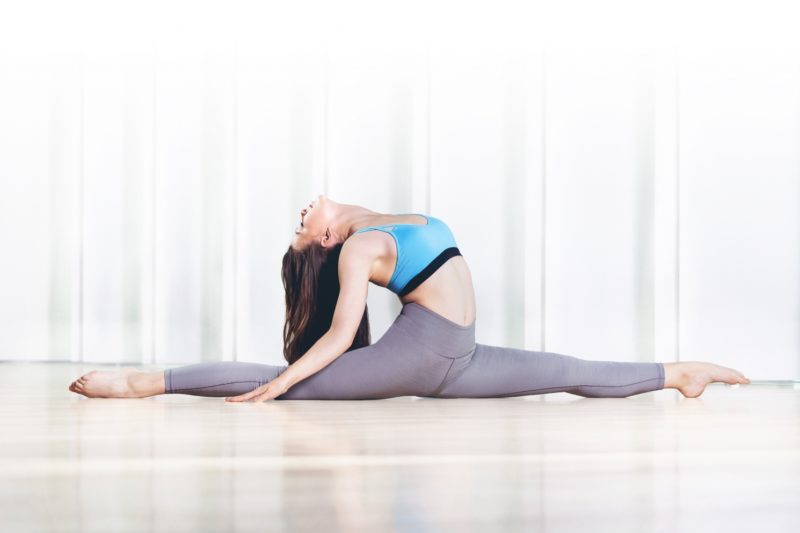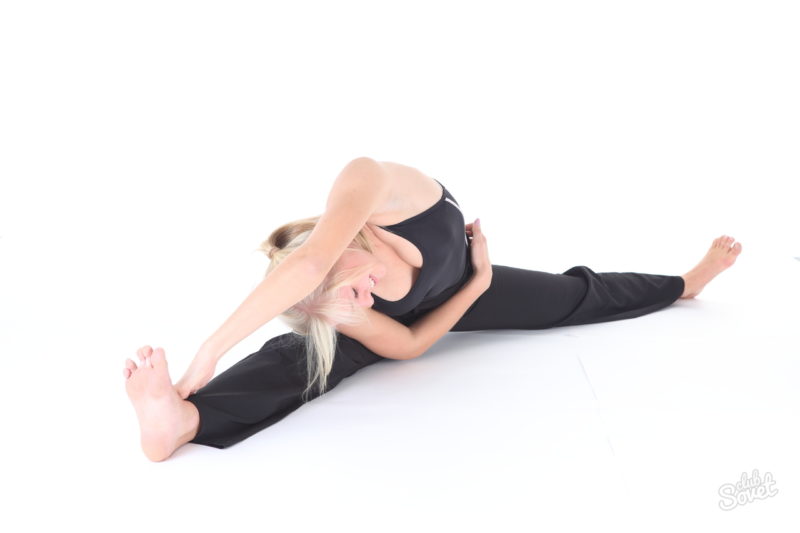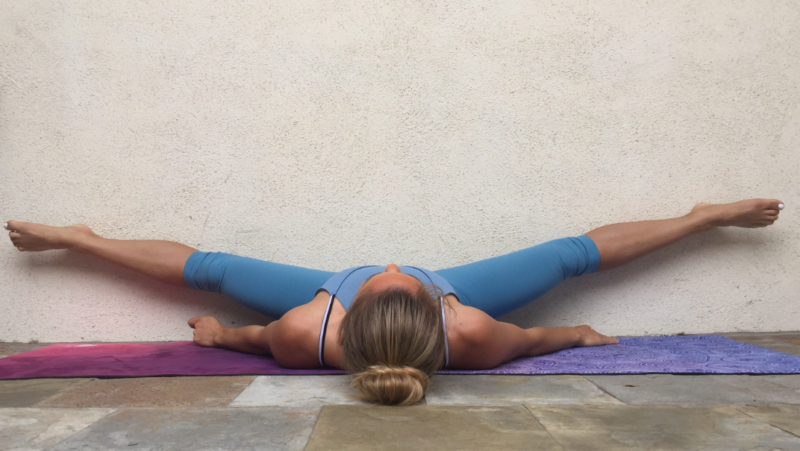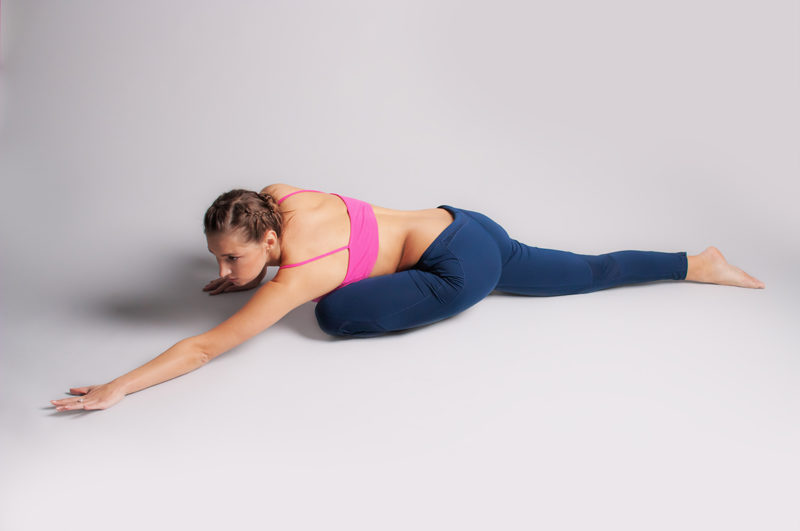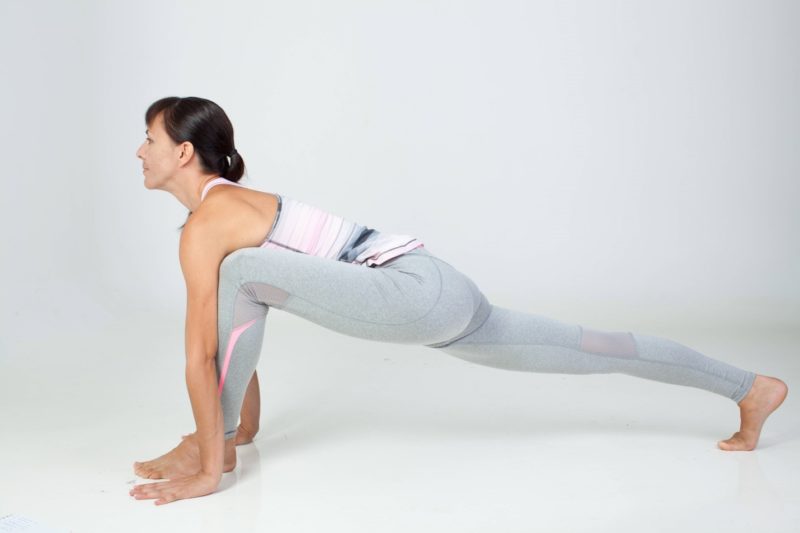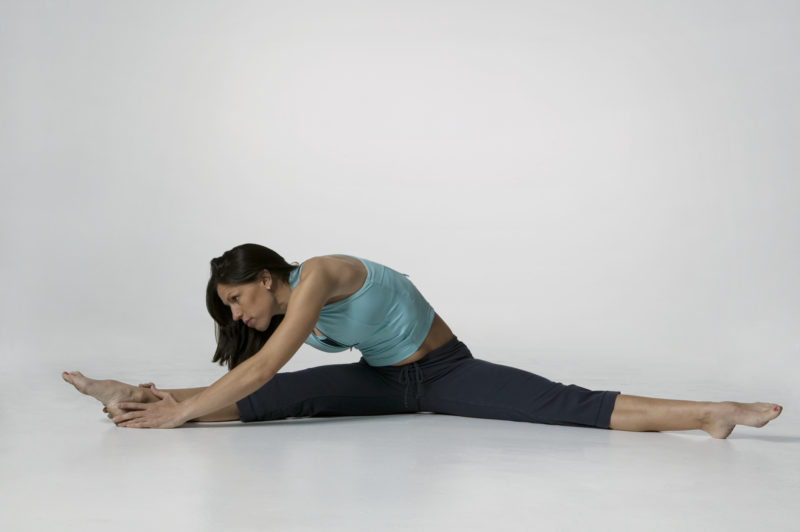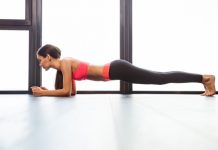To sit on the twine is not an easy task. To do this trick, you need regular training aimed at preparing working muscle groups and ligaments. An important part of the set of mandatory exercises is stretching for twine.
Material Content:
Why stretch?
Gracefully made, without effort and "creaking" twine, it is customary to associate with a beautiful figure and plasticity. However, this acrobatic study has a considerable positive effect on general health.
Due to the stretching of individual muscle groups and the correct position of the spine and pelvis, blood circulation in the abdominal organs is restored.
This, in turn, helps to improve the functions of the intestines and the genitourinary system. In addition, problems with the spine are eliminated. Many experts recommend this exercise as a remedy for pain during menstruation and to get rid of infertility.
But in order to get the most beneficial effect and avoid injuries, it is important to first prepare the ligaments and muscles. For this, a special set of exercises for stretching to twine is developed. It should be performed every day, even in the morning and in the evening. The main thing is not to take breaks, otherwise you will have to start all over again.
Types of Twine
Twine is divided into two main types:
- Transverse. It is characterized by the maximum breeding of the legs in opposite directions from the body, forming a wide angle. It is noteworthy that a small percentage of people will never be able to perform such a trick. The fault is the special design of the hip joint.This exercise is easier for men than for women. This is due to the development of adductor muscles of the hips, which in lovely ladies are more pronounced.
- Longitudinal. One leg is stretched forward, and the second - symmetrically to her behind the body. It turns out to be straight, perpendicular to the upper body. Such twine is right-sided and left-sided depending on the leg, which is located in front. A woman will cope with the exercise faster than a man. As in the previous version, everything here is determined by the anatomical structure of the muscles involved in the twine. In the stronger sex, the back of the thigh is much more powerful, which causes more resistance when trying to twine. However, in general, this kind of exercise is considered simpler.
In addition to these options, there are several subspecies of twine.
- Sagging. The indicator of the highest level of skill. This variety is often called royal twine. The angle formed by legs apart should be more than 180 degrees. For its implementation, additional equipment is usually required: blocks, chairs or other elements that you can lean on when sagging.
- Vertical. The exercise is performed in a standing position with support on any vertical surface. It can be longitudinal (with mandatory support of the hands) or transverse.
- On hands. This trick is often performed by professional acrobats, because it requires a high level of skill, incredible plasticity and very strong hands.
- In a jump or punch. A kind of twine, implying the breeding of the legs in motion. The “jumping” option may be executed from a standstill or take-off. “In kick” exercise is done with a dynamic wave of the legs.
- Lying on the floor. The body body is on a supporting surface. In such a position, it is possible to demonstrate both longitudinal and transverse twine, when one leg is pulled up to the body and fixed in this position.
Other varieties of the gymnastic element are also known. But the options listed are fundamental.
A set of exercises for warming up
Many trainers recommend taking a shower before starting classes to relax and warm up the muscles, thereby reducing the likelihood of injuries and discomfort.
The warm-up before stretching is a mini-format cardio workout. In time, it takes no more than 20 minutes. You can start with swings, rotation of bent legs, squats. Rope jumping, fast rhythmic dance or regular running are perfect. If possible, it is permissible to use a step simulator.
An approximate set of exercises can look like this:
- head rotation and tilting;
- moving shoulders back and forth and in a circle;
- tilts of the case in all directions, standing;
- stretching palms closed in the castle in all directions;
- hands touching the floor between the legs spaced at a comfortable width;
- movement of the pelvis: in a circle, "eight";
- alternately raising the knees to the chest from a standing position;
- walking at a fast pace or running, or jumping.
After warming up, you must immediately go to the main exercises during which, finally, working muscle groups are stretched.
Stretch twine for beginners
The implementation of each element requires individual training.
For transverse
This type of gymnastic element is considered the most complex. However, the above set of exercises for stretching to twine will help to achieve the goal in a short time.
- The basic element of the training is as follows: in a standing position with legs spaced shoulder-width apart, grab your elbows and stretch your forearms down. Ideally, you need to reach the floor. Then the legs move a little, and the exercise is carried out again in the same way.
- Starting position - sitting on the floor with legs apart and the most straight back. You need to raise your hands and lean forward several times.
- From the same position, the arms extend in front of the body. The whole body stretches forward, while the palms should reach the toes. The ideal position is when the upper body lies on the floor. Performing this exercise, you can work out well the hamstrings, as well as the back and inner thighs.
- As a support for the next part of the training, it is advisable to use a slippery surface (linoleum, parquet or laminate). Legs are shoulder-width apart, arms are down, back is straight. You should very smoothly place your legs in different directions to the highest possible level. When the palms touch the floor, you need to fix the position and try to spread your legs even wider.
- This stretching option is aimed at increasing back flexibility and muscle development. The legs are in the normal position, hands are on the back of the hips or lower back. From this pose you need to bend back as much as possible, trying to see your own heels.
- Legs apart, as far as possible, arms upstairs. In this position, you should sit down several times (very slowly and deeply). The back is constantly straight. Reaching the extreme level, you need to linger for half a minute, and then return to the starting position.
- Legs are shoulder-width apart, arms are located along the body. One leg bends, goes up and to the side. Shin is fixed by hand and rises. The same should be done with the second leg.
- Legs together, arms down. Next comes a deep forward bend with the heels around. The ideal result is when the head reaches the floor.
Performing this set of exercises regularly, you can not only sit on the transverse twine, but also work out the muscles, as well as increase the plasticity of the body.
For longitudinal
A simple but effective workout for those who want to master longitudinal splits.
- While in a sitting position, you should spread your legs in different directions and alternately reach the fingertips of each leg. Then it remains to do the same slope only in the forward direction. If the exercise is difficult, you can pull the leg bent at the knee to yourself, opposite the side to which the body is directed when tilting.
- Standing, legs apart shoulder width apart, lunge with one foot and try to reach it with the chest. As a support, you can use a chair or a wall. Do the same exercise with the other leg.
- Lying on your back, stretch one leg, and in the meantime pull the other to the stomach in a bent position. Repeat for the other side.
- In a sitting position, bring the extended legs together and try to reach the knees with the forehead. Having reached the maximum degree of stretching, fixate for 30 seconds, while trying to bend even lower.
- Kneeling, put your left foot forward, pulling the toe toward you. Having gained balance with the help of arms spread out on both sides, try to touch the straight leg with your chest. Perform actions with the right foot.
- In the same starting position, put the straight leg back, crouching as deep as possible. The leg bent at the knee forms a right angle. It is necessary to do a few springy movements, and then change the leg.
- Leaning on your knees, you should push them very wide, as if sitting between your heels.
Exercises for longitudinal twine are simple and effective. But the result can be obtained only with the systematic implementation of the entire complex.
Contraindications of this type of exercise
Due to the heavy load on the body, twine extensions can be contraindicated in:
- osteoporosis;
- hernias;
- arthritis;
- any injuries and diseases of the joints;
- fractures;
- spinal problems;
- oncology;
- hematomas;
- heart ailments;
- hypertension
- vascular disease;
- rise in temperature;
- the flu.
You should abandon classes in the postoperative period.
Certain restrictions are provided for:
- people with osteochondrosis of the spine;
- pregnant women
- women during menstruation.
Follow these instructions without fail.Otherwise, you can cause significant harm to your own health.
Mastering the twine at home is not so difficult. It is important to develop a phased program for yourself and stick to it every day. Perseverance, willpower and self-discipline will help to achieve amazing results.


